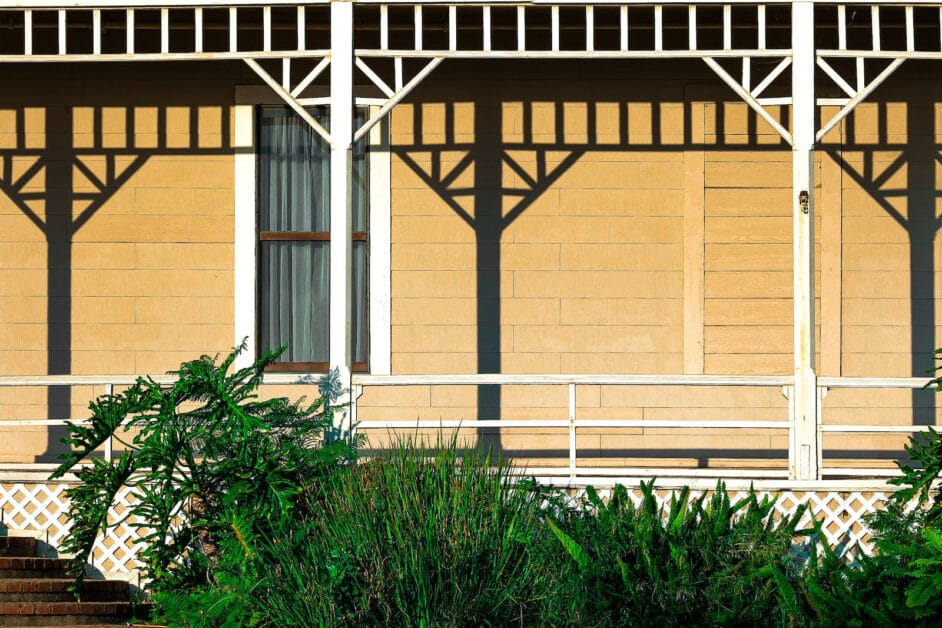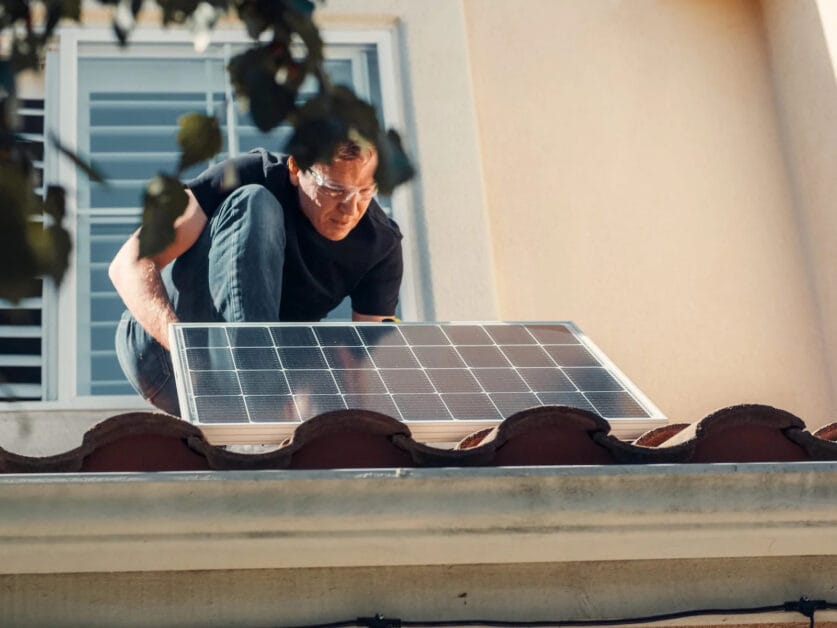Revealed: Why the Direction Your Home Faces Can Change Everything (Guide)

I’ve been in the home renovation business for over 20 years, and I can tell you that your home’s direction can change everything. That’s right, everything!
In this article, I’ll dive deep into why your home’s direction matters and what you can do to make the most of it. So buckle up and get ready to learn something new!
Impact of Home Direction on Light and Temperature

As a home designer, I know that the direction your home faces can greatly impact the amount of natural light and temperature control you’ll experience.
Let’s take a closer look at how the direction of your home can affect the light and temperature inside.
The Effect of Sunlight

The direction your home faces can greatly impact the amount of sunlight it receives. If you have a south-facing home, you’ll get plenty of natural light throughout the day, including morning and afternoon sun.
This can give your home a warm, inviting feel, with red and orange hues that create a cozy atmosphere. If you have an east-facing home, you’ll get plenty of morning sun, which can be a great way to wake up and start your day.
West-facing homes, on the other hand, get plenty of afternoon sun, which can be perfect for those who love to relax in the sun after a long day. North-facing homes, however, get the least amount of natural light, which can make them feel darker and colder.
Temperature Control and Energy Efficiency

The direction your home faces can also greatly impact temperature control and energy efficiency. If you live in a colder climate, a south-facing home can be a great way to get more natural light and heat gain, which can help reduce your heating costs.
On the other hand, if you live in a warmer climate, an east-facing home can be a great way to get morning sun without overheating, while a west-facing home can be perfect for those who want to enjoy the sunset without too much radiant heat.
North-facing homes, however, can be more difficult to heat and cool, leading to higher energy consumption and heating and cooling costs.
Regarding energy efficiency, your home’s direction can make a big difference. If you have a south-facing home, you can use shading devices like awnings or trees to help block the sun in the summer, which can help reduce your air conditioning costs.
If you have an east-facing home, you can use window treatments like blinds or shades to help block the morning sun, which can help reduce your energy consumption.
West-facing homes, on the other hand, can benefit from exterior shading devices like shutters or trellises, which can help reduce radiant heat gain.
Finally, if you have a north-facing home, you may need to rely more on artificial lighting and heating, which can increase your energy consumption and costs.
Home Direction and Lifestyle

As a home designer, I know that the direction your home faces can significantly impact your lifestyle. It can affect everything from your health and well-being to home maintenance and furniture placement.
If you’re facing east, wake up to the energizing morning sun, which can kickstart your day better than a double espresso. If you’re more of a night owl, a west-facing living room means you get to bask in those golden hour vibes come evening time.
Now, it’s not just about catching rays. That sunrise streaming through your bedroom window? It’s a natural alarm clock that helps to regulate your sleep cycle. And regarding your casa’s upkeep, direction matters big time. South-facing walls? Thanks to the sun’s harsh spotlight, they will need some love with paint and sealant more often.
And let’s talk about your sanctuary’s setup. Place that cozy reading chair where the light’s just right, and you won’t strain your eyes. Or position your patio for the perfect sunset show, turning your after-work chill-out into something special.
The direction your home faces can significantly impact your health and well-being. For example, homes that face east receive more natural light in the morning, which can help regulate your circadian rhythms and improve your sleep quality.
On the other hand, homes facing west receive more natural light in the afternoon and evening, which can benefit those who work from home and need more artificial light during the day.
Considerations for New Homes

Let’s lay down the blueprint for success with your new build. Orientation isn’t just about the view – though that’s a sweet bonus. It’s about crafting the perfect backdrop for your life.
Think about it – if you’re a sunrise yoga person, you’ll want those rays hitting your mat just right. And if you’re planning some epic backyard barbecues, let’s ensure your guests aren’t squinting into the sun when they should be admiring your grill skills.
Don’t forget about the green in your wallet, either. Position your home to take advantage of passive solar heating, and you could save some serious coin on energy bills. And if you’re going solar panel crazy – more power to you – let’s ensure they’re soaking up the maximum sunshine.
And about that commute – nothing like a garage that’s easy to zip in and out of without battling the glare at dawn or dusk. It’s all about thinking ahead and planning your space to fit your pace. Your new home is more than just a spot to crash – it’s your personal life hub, and every degree of direction will count.
Cultural Perspectives on Home Orientation

I’ve talked about the importance of home orientation from a practical point of view, but did you know that it also has cultural significance? Many cultures have beliefs about the ideal orientation for a home based on principles of energy flow, luck, and harmony.
One such cultural perspective is feng shui, an ancient Chinese practice that emphasizes arranging objects and spaces to promote positive energy flow, or “qi.”
According to feng shui principles, the orientation of a home can affect everything from the occupants’ health and happiness to their financial success.
For example, a home facing south is considered auspicious for career success, while a north-facing home is considered better for academic achievement.
Another cultural perspective on home orientation comes from Vastu Shastra. This ancient Indian practice focuses on aligning a building with the natural elements and energies of the universe.
According to Vastu Shastra principles, the ideal orientation for a home depends on the occupant’s birth date and gender and the direction of the plot of land on which the home is built.
For example, a home facing east is considered best for those born under certain zodiac signs, while a west-facing home is considered better for others.
Home Direction and Renewable Energy

Regarding renewable energy, the direction your home faces can greatly impact the amount of energy you can harness from the sun. If your home faces south, you’re in luck!
South-facing homes get the most sunlight throughout the day, making them ideal for solar panel installation. But don’t worry if your home doesn’t face south – there are still plenty of options for harnessing solar energy.
One option is to install solar panels on your roof. Solar panels work by absorbing sunlight and converting it into electricity. The more sunlight your panels receive, the more electricity they can produce.
If your home doesn’t face south, you may need to install more panels or use a different panel type to maximize energy production.

Another option is to install a solar water heater. Solar water heaters use the sun’s energy to heat water, which can then be used for showers, laundry, and other household tasks.
Like solar panels, solar water heaters work best when they receive direct sunlight, so installing them in a location with plenty of sun throughout the day is important.
Optimizing Your Home’s Light and Temperature: Smart Tips

Even if you can’t spin your house around to face the sun, you can make plenty of smart moves to harness light and keep your temps steady without needing a major overhaul. Here’s the lowdown:
Maximizing Natural Light:
- Mirror, Mirror: Use mirrors strategically to bounce light around. Place them opposite windows to reflect the sunlight into darker corners.
- Color it Bright: Paint walls in light colors that reflect natural light, making spaces feel brighter and larger.
- Window Treatments: Use light, translucent curtains that allow light in while providing privacy. Adjustable blinds can direct light to the ceiling for rooms with too much glare.
Controlling Temperature:
- Window Film: Apply reflective window film to bounce back some of the summer sun’s heat while letting light through.
- Insulation: Good insulation doesn’t just keep you warm in winter; it keeps you cool in summer. Check attics, basements, and crawl spaces to ensure they’re well-insulated.
- Seal the Deal: Use weather stripping or caulking to seal up drafts around doors and windows to prevent heat from sneaking in or out.
- Shade Trees: Plant deciduous trees on the sunnier sides of your home. They’ll provide shade in the summer, and when they shed their leaves in winter, they’ll let in more sunlight.
- Vines and Pergolas: Use climbing plants and pergolas on patios or against walls to create natural cooling shade.
- Windbreaks: Plant evergreen trees or shrubs on the windward side of your home to block cold winds in winter.
Interior Design Techniques:
- Ceiling Fans: Install ceiling fans to circulate air. Set them to run counterclockwise in the summer for a cool breeze and clockwise in winter to push warm air down.
- Thermal Drapes: Use thermal drapes during colder months. They’re like a blanket for your windows, keeping the chill out.
- Furniture Placement: Keep furniture away from vents, radiators, and windows to ensure proper airflow and prevent blocking natural light.
Lighting Smart:
- LED Bulbs: Switch to LED bulbs that give off a bright light without the heat of old-school incandescent bulbs.
- Task Lighting: Instead of lighting an entire room, use task lighting for specific activities to save energy.
Energy Monitoring:
- Smart Thermostats: Install a smart thermostat to learn your schedule and adjust temperatures for optimal energy use and comfort.
- Energy Audit: Consider getting an energy audit to identify where you can impact energy savings.
Implementing these tweaks can greatly affect how your home feels and functions. You don’t need a total reno to live comfortably — sometimes, the small changes pack the biggest punch.
Seasonal Strategies: Year-Round Home Comfort for Any Orientation
Navigating the shifting demands of each season can be a breeze with the right maintenance plan. Below is a table that breaks down essential tasks by season, ensuring your home stays in peak condition all year.
From keeping cool during the scorching summers to staying snug when winter rolls in, these tips are your go-to for home comfort, no matter which way your home faces.
| Season | Maintenance Task | Purpose | Tips |
|---|---|---|---|
| Spring | Gutter Clean-Up | Prevent water damage | Clear debris from gutters and downspouts to ensure proper drainage. |
| Seal & Save | Improve energy efficiency | Seal gaps and cracks to keep critters out and comfort in. | |
| Window Wisdom | Maximize natural light | Clean windows and switch to lighter curtains for a brighter interior. | |
| Summer | Beat the Heat | Reduce interior heat | Use reflective window treatments to deflect heat during the hottest day. |
| Fan-tastic | Enhance air circulation | Set ceiling fans to rotate counterclockwise for a cooling effect. | |
| AC Check | Maintain cooling systems | Service AC units, clean filters, and ensure the area around the unit is clear. | |
| Fall | Heating Health Check | Prepare for cold weather | Service your heating system and replace any worn-out filters. |
| Weatherproofing | Insulate against drafts | Install weather stripping around doors and windows to seal in warmth. | |
| Tree Trimming | Protect your home | Cut back any overhanging branches that could be weighed down by snow or ice. | |
| Winter | Insulation Inspection | Retain heat | Check and upgrade insulation in the attic and basement as needed. |
| Pipe Protection | Prevent freezing | Insulate pipes, especially those on exterior walls or unheated spaces to avoid bursts. | |
| Emergency Kit | Safety preparation | Keep an updated emergency kit with winter necessities like blankets and a portable charger. |
This year-round maintenance schedule is your checklist for keeping your home safe, efficient, and comfortable through the seasons.
References
Organizations:
- The U.S. Green Building Council (USGBC). https://www.usgbc.org/
- The U.S. Environmental Protection Agency (EPA). https://www.epa.gov/
- The National Renewable Energy Laboratory (NREL). https://www.nrel.gov/
Books:
- “Residential Energy: Cost Savings and Comfort for Existing Buildings” by John Krigger and Chris Dorsi
- “The Solar House: Passive Heating and Cooling” by Daniel D. Chiras
- “Feng Shui, Your Life” by Jayme Barrett
Website Resources:
- The Building America Solution Center. https://basc.pnnl.gov/
- The Spruce. https://www.thespruce.com/
